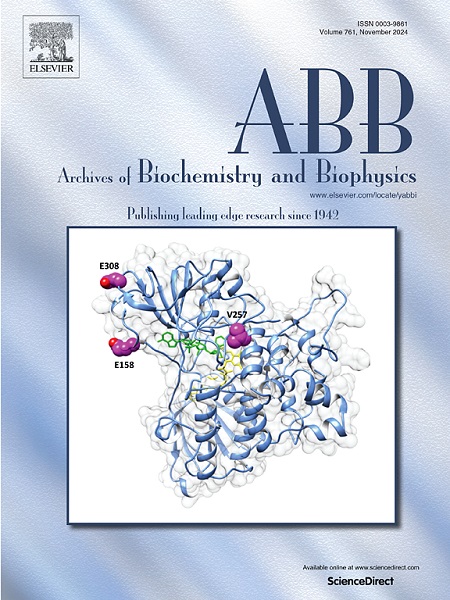ZNF460 enhances HADHB level by activating its transcription to promote the progression and pulmonary invasion of cutaneous T cell lymphoma
IF 3.8
3区 生物学
Q2 BIOCHEMISTRY & MOLECULAR BIOLOGY
引用次数: 0
Abstract
Background
During the progression of primary cutaneous T-cell lymphoma (CTCL), malignant T cells acquire the capacity to invade extracutaneous sites. However, the mechanisms driving CTCL progression and invasion remain poorly understood. This study aimed to investigate the role and specific mechanisms of ZNF460 and HADHB in the progression of CTCL.
Methods
The viability, proliferation, apoptosis, migration, invasion, and fatty acid metabolism of malignant T lymphoma cells were assessed using CCK-8, EdU, TUNEL, Transwell, and ELISA assays. ChIP-qPCR, dual-luciferase reporter, qRT-PCR, and WB assays were utilized to elucidate the regulation of HADHB transcription by ZNF460. Tumor growth and pulmonary invasion in CTCL mouse models were evaluated through tumor growth curves and HE staining.
Results
Knockdown of HADHB inhibited the viability, proliferation, migration, invasion, and fatty acid metabolism of malignant T lymphoma cells, whereas overexpression of HADHB exhibited the opposite effects. Furthermore, overexpression of HADHB accelerated the tumor growth rate and pulmonary invasion in CTCL mice. ZNF460 was found to upregulate HADHB levels in malignant T lymphoma cells by activating HADHB transcription. Additionally, knockdown of ZNF460 led to the reduction in viability, proliferation, and migration of malignant T lymphocytes and the inhibition of CTCL mice tumor growth and pulmonary invasion.
Conclusion
Collectively, ZNF460 enhanced HADHB levels by activating its transcription, thereby promoting CTCL tumor growth and pulmonary invasion.
ZNF460通过激活HADHB的转录,提高HADHB水平,促进皮肤T细胞淋巴瘤的进展和肺侵袭。
背景:在原发性皮肤T细胞淋巴瘤(CTCL)的进展过程中,恶性T细胞获得了侵袭皮外部位的能力。然而,驱动CTCL进展和侵袭的机制仍然知之甚少。本研究旨在探讨ZNF460和HADHB在CTCL进展中的作用和具体机制。方法:采用CCK-8、EdU、TUNEL、Transwell和ELISA检测恶性T淋巴瘤细胞的活力、增殖、凋亡、迁移、侵袭和脂肪酸代谢。利用ChIP-qPCR、双荧光素酶报告基因、qRT-PCR和WB等方法分析ZNF460对HADHB转录的调控作用。通过肿瘤生长曲线和HE染色评价CTCL小鼠模型的肿瘤生长和肺侵袭情况。结果:低表达HADHB可抑制恶性T淋巴瘤细胞的活力、增殖、迁移、侵袭及脂肪酸代谢,而过表达HADHB则相反。此外,HADHB的过表达加速了CTCL小鼠的肿瘤生长速度和肺侵袭。ZNF460被发现通过激活HADHB转录上调恶性T淋巴瘤细胞中的HADHB水平。此外,敲低ZNF460可降低恶性T淋巴细胞的活力、增殖和迁移,抑制CTCL小鼠肿瘤生长和肺侵袭。结论:总的来说,ZNF460通过激活HADHB的转录来增强HADHB水平,从而促进CTCL肿瘤的生长和肺部侵袭。
本文章由计算机程序翻译,如有差异,请以英文原文为准。
求助全文
约1分钟内获得全文
求助全文
来源期刊

Archives of biochemistry and biophysics
生物-生化与分子生物学
CiteScore
7.40
自引率
0.00%
发文量
245
审稿时长
26 days
期刊介绍:
Archives of Biochemistry and Biophysics publishes quality original articles and reviews in the developing areas of biochemistry and biophysics.
Research Areas Include:
• Enzyme and protein structure, function, regulation. Folding, turnover, and post-translational processing
• Biological oxidations, free radical reactions, redox signaling, oxygenases, P450 reactions
• Signal transduction, receptors, membrane transport, intracellular signals. Cellular and integrated metabolism.
 求助内容:
求助内容: 应助结果提醒方式:
应助结果提醒方式:


